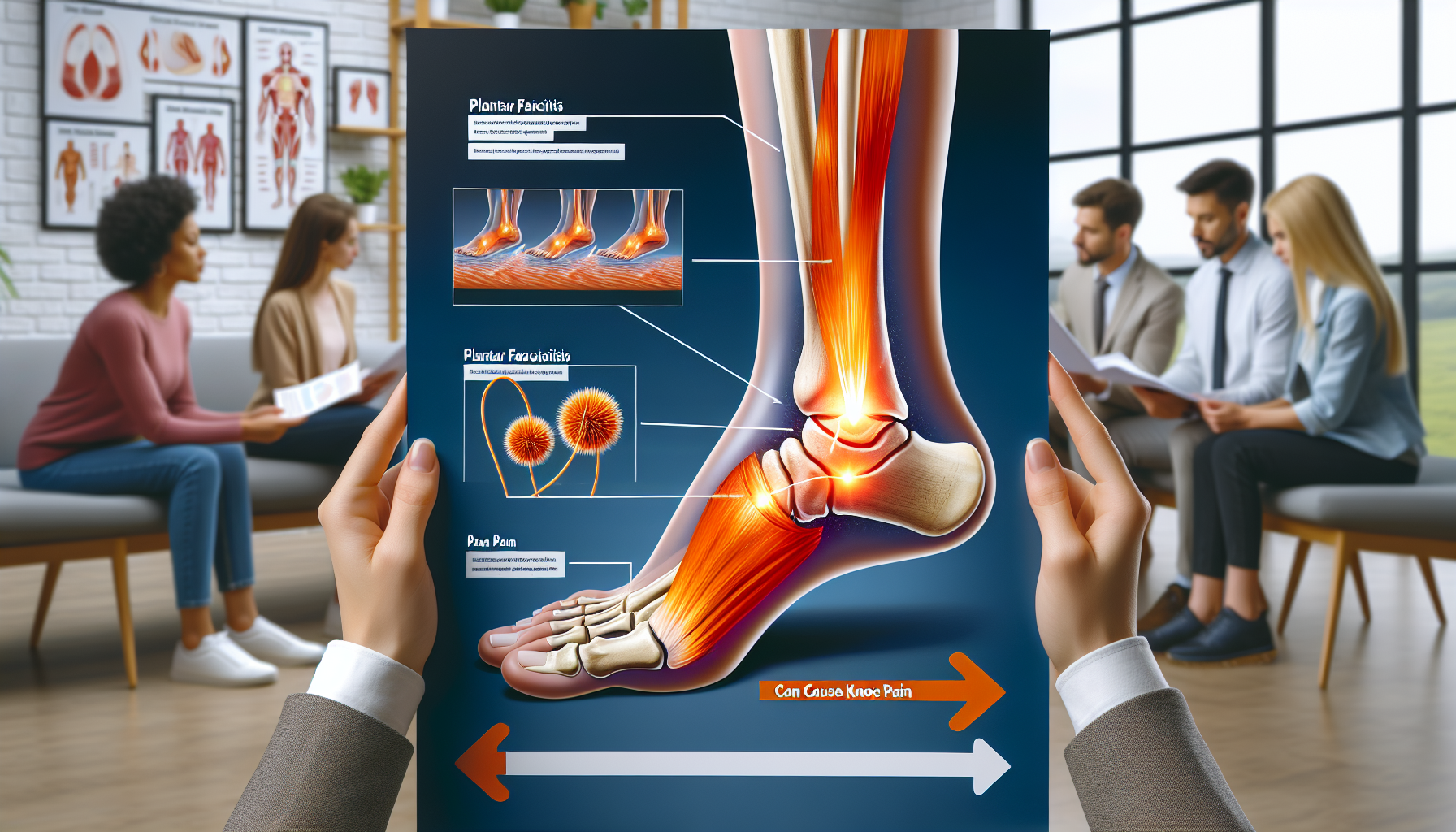
can plantar fasciitis cause knee pain
Can Plantar Fasciitis Cause Knee Pain?
Plantar fasciitis is a common foot condition that causes sharp pain in the heel, especially during the first steps of the day. While it primarily affects the feet, many people wonder if plantar fasciitis can lead to pain in other areas of the body, such as the knees. The short answer is yes—there is a connection between plantar fasciitis and knee pain. In this blog post, we’ll explore how these two issues are related and what you can do to manage and prevent them.
Understanding the Link Between Feet and Knees
The body is a connected system, and the health of your feet plays a crucial role in the well-being of your knees. Your feet act as the foundation of your body, supporting your weight and absorbing the impact of daily activities such as walking, running, and standing. When there’s a problem with your feet—like plantar fasciitis—it can disrupt your biomechanics and lead to issues elsewhere in your body, including your knees.
Here’s how plantar fasciitis can contribute to knee pain:
- Altered Gait: When you have plantar fasciitis, the pain in your heel may cause you to change the way you walk. This altered gait can put extra strain on your knees, leading to discomfort or even injury over time.
- Imbalanced Pressure: Plantar fasciitis often leads to uneven weight distribution in the feet. This imbalance can cause additional stress on the knee joints, potentially resulting in pain or inflammation.
- Compensatory Movements: To avoid heel pain, you might unconsciously shift your body weight or rely on different muscle groups. This compensation can strain the knees and surrounding tissues.
How to Manage and Prevent Knee Pain Linked to Plantar Fasciitis
If you’re experiencing both plantar fasciitis and knee pain, addressing the root cause is essential. Here are some tips to help manage and prevent these issues:
1. Treat Your Plantar Fasciitis
Focus on reducing inflammation and pain in your feet. Some effective treatments for plantar fasciitis include:
- Stretching exercises for the plantar fascia and calf muscles
- Using orthotic inserts or supportive footwear
- Applying ice to the affected area
- Physical therapy to improve foot mechanics
Learn more about plantar fasciitis treatments.
2. Strengthen and Stretch
Weak or tight muscles in the legs can contribute to knee pain. Incorporate exercises that strengthen your quadriceps, hamstrings, and glutes, as well as stretches for your calves and hip flexors. Improving your overall leg strength and flexibility can help reduce knee strain.
3. Maintain Proper Footwear
Wearing supportive shoes can prevent plantar fasciitis from worsening and reduce the risk of knee pain. Look for shoes with good arch support and cushioning, especially if you spend a lot of time on your feet.
4. Consult a Professional
If your symptoms persist, consider consulting a podiatrist or orthopedic specialist. They can assess your condition, recommend custom orthotics, or suggest additional treatments tailored to your needs.
When to See a Doctor
While mild knee pain related to plantar fasciitis can often be managed with at-home remedies, there are times when you should seek medical attention. If you experience severe pain, swelling, or difficulty walking, it’s important to consult a healthcare professional to rule out other potential issues, such as a knee injury or arthritis.
Conclusion
Plantar fasciitis and knee pain may seem like unrelated conditions, but they are often linked through the body’s interconnected biomechanics. By addressing plantar fasciitis and taking steps to improve your foot health, you can reduce the strain on your knees and improve your overall quality of life.
Have you experienced knee pain due to plantar fasciitis? Share your story in the comments below, or check out our other health and wellness articles for more tips on staying active and pain-free.